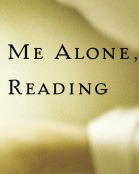Smart markets

|
“Munch away,” Saul Levmore, dean and William B. Graham professor in the Law School, directed the audience in packed Classroom II. As law students and faculty chomped on turkey and portobello sandwiches last Thursday, Levmore set out to dethrone experts in the first lecture of the fourth annual Chicago’s Best Ideas series. He offered an array of anecdotes suggesting experts might not be any more knowledgeable than the average joe—or at least than a group of average joes participating in a prediction market.
In prediction markets, participants bet on the likelihood of an event happening, such as a Democrat or Republican being elected to office. The participants purchase either the Democratic or Republican stock, according to their predicted winner, and in so doing raise the stock’s price. The market prices are then taken as the group’s aggregate forecast. For example, if the Democrat’s stock goes for $30 per share and the Republican’s stock commands only $10 per share, the participants predict a Democratic victory. Levmore pointed to the Iowa Electronics Market, which operates in this fashion and has become “famous for predicting political elections with an accuracy not matched” by polls or columnists. Likewise, “futures market for oranges,” he said, “are a better indicator of the weather than the National Weather Service.”
Corporations have taken notice of these markets. In the past, when Hewlett-Packard introduced a new printer, the company asked regional sales managers to determine how many factories should be converted to produce it. In 1996 the company piloted a Web site where employees predicted sales and won prizes for their accuracy. The resulting internal predictions market was so on target, Levmore said, that HP has “ditched” its regional sales predictors. These markets work, he said, because if there is incentive enough—be it money or bragging rights—individuals will bone up on printer sales, politics, or orange growth, and their aggregate knowledge is as good as gold.
Meredith Meyer, ’06
Photo: Saul Levmore


























